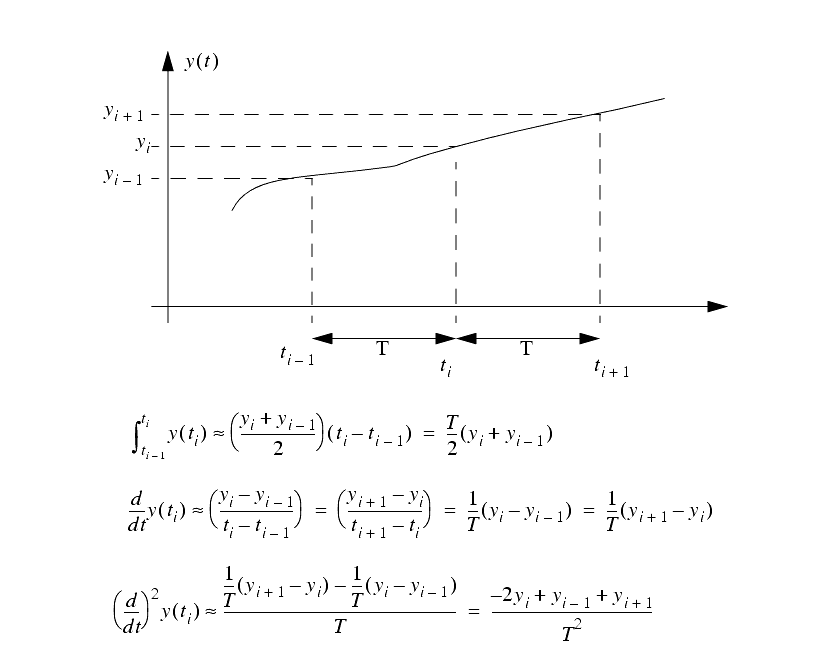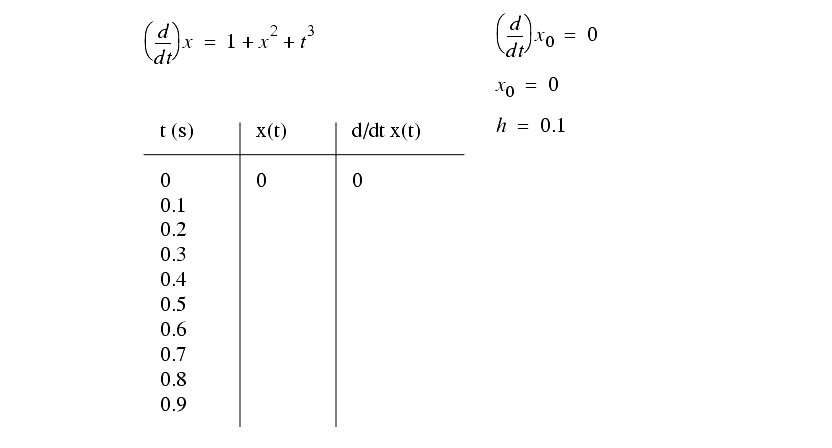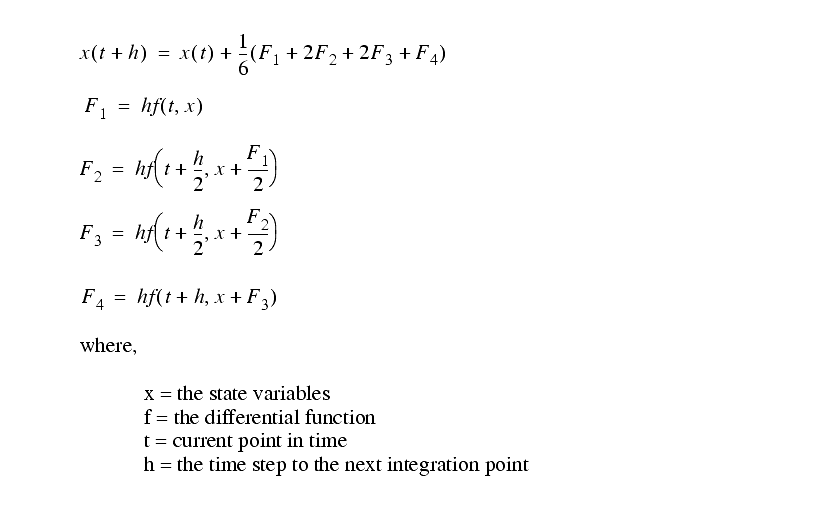
|
|
|
35.7 NUMERICAL METHODS
������������These techniques approximate system responses without doing integrations, etc.
35.7.1 Approximation of Integrals and Derivatives from Sampled Data
������������This form of integration is done numerically - this means by doing repeated calculations to solve the equation. Numerical techniques are not as elegant as solving differential equations, and will result in small errors. But these techniques make it possible to solve complex problems much faster.
This method uses forward/backward differences to estimate derivatives or integrals from measured data.

35.7.2 Euler First-order Integration
������������We can also estimate the change resulting from a derivative using Euler's equation for a first-order difference equation.

35.7.3 Taylor Series Integration
������������Recall the basic Taylor series,

When h=0 this is called a MacLaurin series.
We can integrate a function by,

35.7.4 Runge-Kutta Integration
������������The equations below are for calculating a fourth order Runge-Kutta integration.

35.7.5 Newton-Raphson to Find Roots
������������When given an equation where an algebraic solution is not feasible, a numerical solution may be required. One simple technique uses an instantaneous slope of the function, and takes iterative steps towards a solution.

The function f(x) is supplied by the user.
This method can become divergent if the function has an inflection point near the root.
The technique is also sensitive to the initial guess.
This calculation should be repeated until the final solution is found.
Search for More: |

Custom Search
|

|